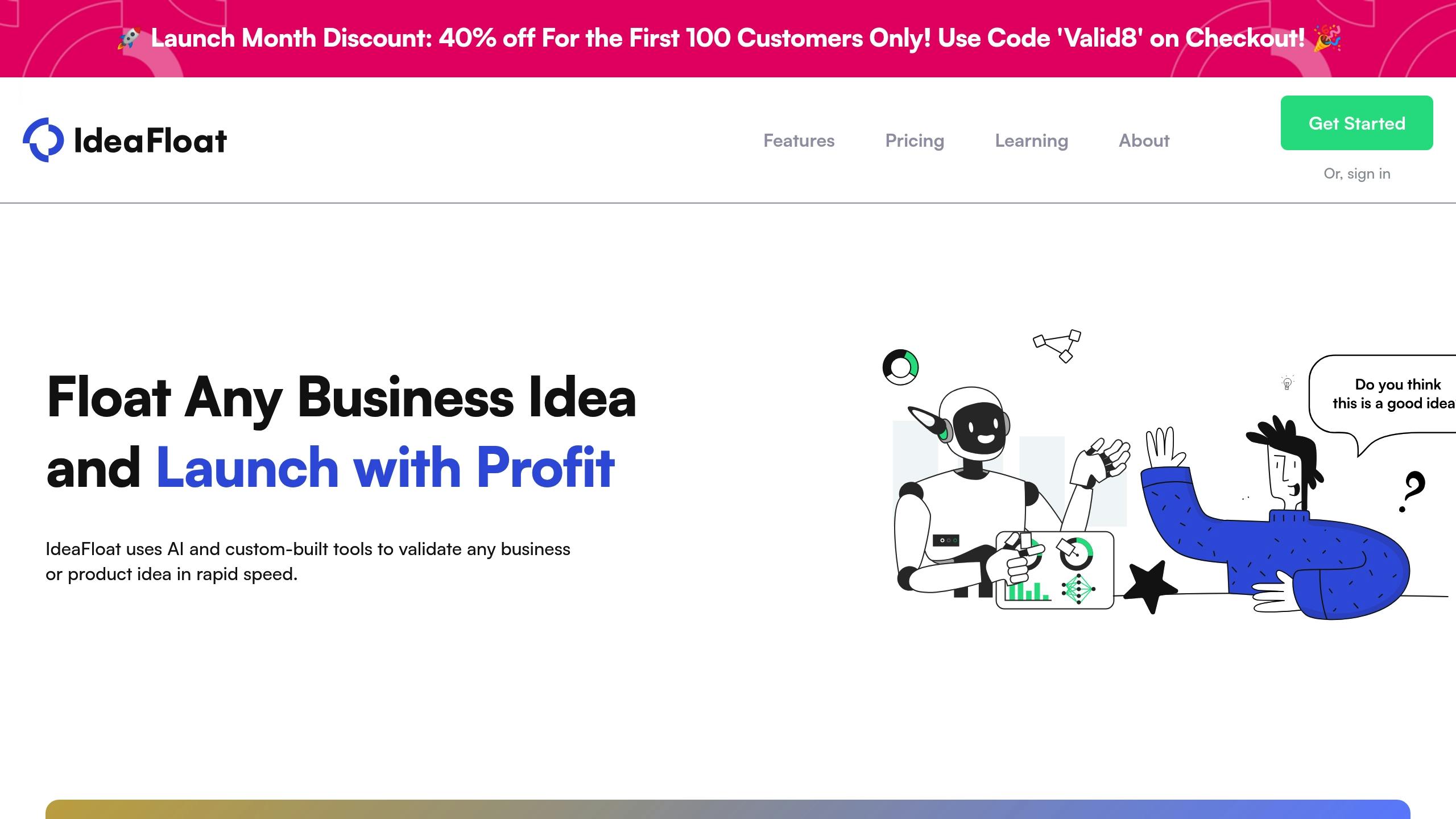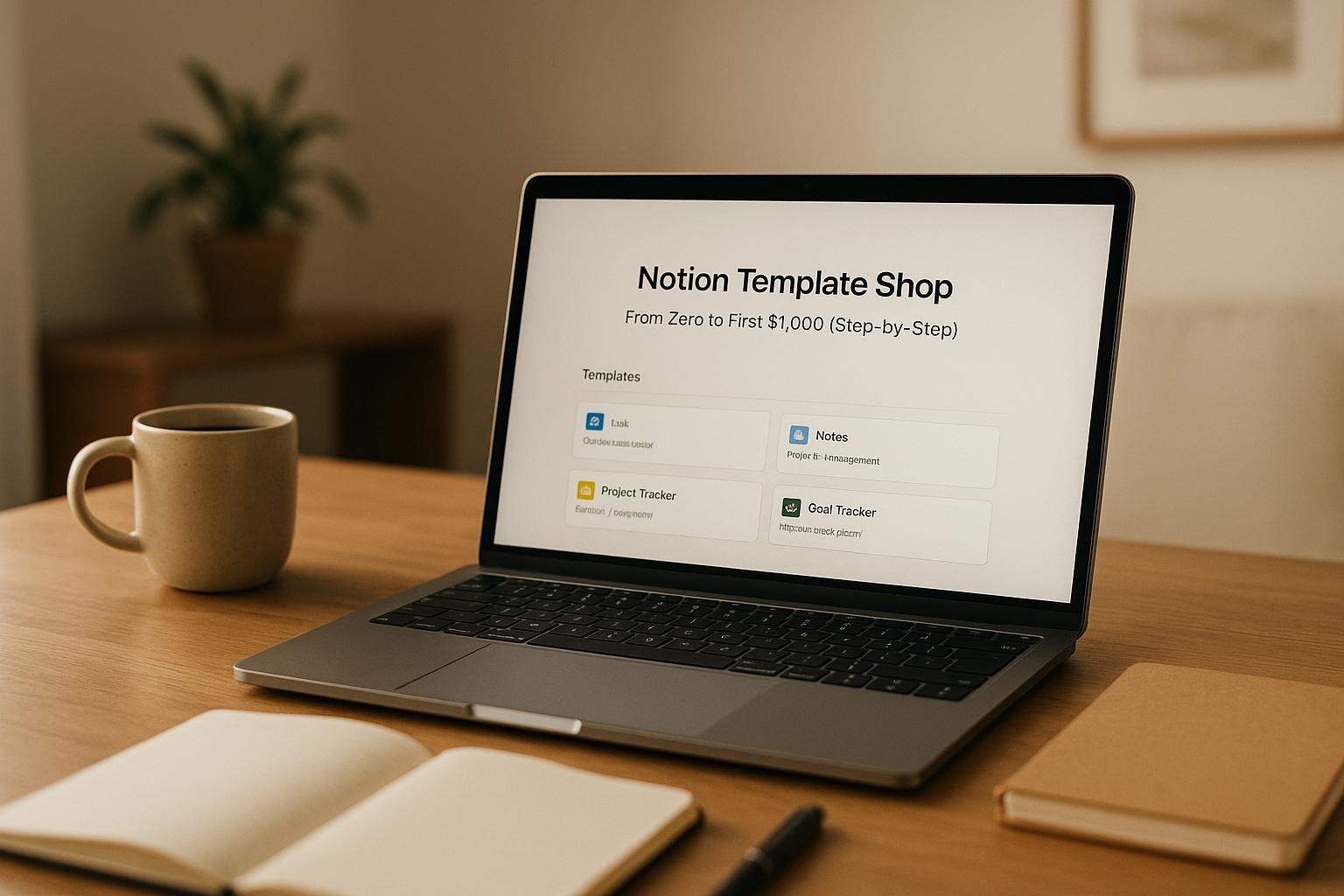
Want to start a business this weekend? Here’s how you can launch quickly with minimal investment and smart tools. This guide covers:
- 3 Business Ideas: Car detailing, meal prep, and digital products - all launched in 48 hours.
- Best Business Types: Local services, digital products, and pop-ups with high earning potential.
- Steps to Start: Validate your idea, set up basic operations, and market effectively.
- Tools to Use: Platforms like IdeaFloat, Canva, and Facebook Groups to save time and effort.
12 Incredibly Simple Service Businesses You Can Start Today
3 Weekend Business Launch Examples
Marcus Thompson's car detailing business shows how a local service can get off the ground quickly with little upfront cost. After noticing frequent complaints about unreliable mobile detailing services in his area, Marcus turned to Facebook's local community groups to gauge interest. A single post offering weekend detailing services brought in 15 booking requests within just 24 hours.
Lisa Chen's meal prep service highlights the value of starting small to test an idea. She began with five healthy meal options and invited ten friends to try them for a week. By using Google Forms to collect daily feedback, Lisa fine-tuned her menu and portion sizes based on customer input before expanding her offering to a larger audience.
The digital product space offers similar opportunities for rapid launches. Sarah Miller's Instagram business guide is a great example. In just 48 hours, she used Canva to design her guide and IdeaFloat for distribution. Her efforts paid off, with 50 sales in the first two days, all through her existing social media network[2].
Here’s a quick breakdown of how these entrepreneurs launched their businesses:
| Business Type | Initial Investment | First Weekend Results | Key Launch Tool |
|---|---|---|---|
| Car Detailing | Low-cost | 15 booking requests | Facebook Groups |
| Meal Prep | Minimal | Validated concept | Google Forms |
| Digital Guide | Low-cost | 50 sales at $27 each[2] | Canva + IdeaFloat |
What made these launches work? They all shared a few key strategies:
- Addressed a clear market need: Each business solved a specific problem or fulfilled a demand.
- Kept it simple: They started with basic services or products to test the waters.
- Leveraged existing tools: Instead of building complex systems, they used accessible platforms like IdeaFloat or Facebook.
- Targeted marketing: Each entrepreneur focused on reaching the right audience through appropriate channels.
The common thread here? They didn’t overcomplicate things. By starting small and prioritizing quick feedback, these entrepreneurs were able to validate their ideas and make adjustments on the fly.
Best Business Types for Weekend Launches
Weekend business launches often succeed when they focus on ideas that are simple to set up and have strong earning potential. Here are three categories that fit the bill, inspired by examples like Marcus' service business and Lisa's pop-up meal prep venture.
Local Service Businesses
Service-based businesses are one of the quickest ways to start earning with minimal upfront costs. With a five-year survival rate of 48.9% [12], they outperform many other business types. The secret? You can leverage skills and tools you already have.
Here are a few ideas to consider:
- House cleaning: Start for around $200 and make over $1,000 in your first month.
- Pet sitting: Invest $100 and see returns of $800 or more.
- Fitness coaching: A $500+ setup can bring in $2,000 monthly.
This approach is similar to Marcus' business model but can be tailored to various services.
Digital Product Sales
Digital products are known for their high profit margins, often ranging from 50-70% [8]. They’re easy to launch quickly and can be sold on platforms like Gumroad or Etsy.
The key to success here is solving specific problems. For instance, you could create short online courses to address urgent needs or design resume templates for job seekers. Once made, these products can be sold repeatedly without any additional production costs.
Local Pop-Up Businesses
Pop-up businesses require an initial investment of $500-$2,000 but can deliver 1.5 to 3 times the return per event. Success often comes down to smart collaborations and targeted marketing.
What makes a pop-up business work?
- Partnering with established businesses for a location.
- Offering a small, curated selection of 5-7 products.
- Building urgency with social media promotions.
- Using mobile payment systems like Square for convenience.
With the gig economy projected to grow to $455 billion by 2025 [11], all these business types have strong potential. They also align with the rapid testing methods highlighted in our case studies, especially when using tools like IdeaFloat for instant feedback.
sbb-itb-08dd11e
Testing Your Business Idea First
Validating your idea early can boost your chances of success. With modern tools, you can quickly measure market interest and refine your concept. For example, Marcus used Facebook groups, and Lisa tapped into her friend network for feedback. Today, platforms like IdeaFloat make the process even faster and more efficient.
IdeaFloat Market Testing Tools

IdeaFloat offers a suite of tools designed to help you assess your business idea's potential before launching. One standout feature is the Audience Insights tool, which identifies promising customer segments and their specific needs. For instance, John tested his vegan meal delivery idea and found his primary audience was urban millennials. This allowed him to fine-tune his marketing strategy [1].
Another key feature is the Validate Score, which evaluates:
- Market size potential
- Competition levels
- Pricing feasibility
- Customer acquisition costs
- Revenue forecasts
This approach mirrors how Sarah Miller tested pricing for her Instagram guide before scaling her business [2].
Pre-Launch Market Testing
Early testing can save time and resources. Take Sara's eco-friendly cleaning service as an example: she discovered a higher demand for organizing services, prompting her to pivot before spending on cleaning supplies [2].
Here are a few quick ways to test your idea:
- Build a simple landing page to collect email signups.
- Use social media polls to explore pricing options.
- Offer your product or service to a small audience through local channels.
Adjusting Based on Test Results
Emma’s jewelry business encountered a challenge: only 2% of people pre-ordered despite 20% engagement. This led her to adjust pricing [3].
When reviewing test results, focus on these metrics:
| Metric | Target Range | Action If Below Target |
|---|---|---|
| Engagement Rate | 15-25% | Refine your marketing message |
| Conversion Rate | 5-10% | Adjust pricing or offering |
| Email Signup Rate | 8-12% | Improve your value proposition |
IdeaFloat can help pinpoint areas for improvement. For example, Maria used these insights to pivot her fitness app toward prenatal fitness after realizing the general fitness market was saturated [4].
Common Quick-Launch Mistakes
Even with modern tools to test ideas, 20% of quick-start businesses still fail, and 82% of those cite cash flow issues as a major factor [5]. Knowing where others stumble can help you avoid the same fate.
Finding the Right Balance
Launching a business quickly means juggling two priorities: planning and execution. A good rule of thumb is to spend around 25% of your time researching - like analyzing competitors and pricing - and 75% on marketing and sales efforts.
Covering Legal Basics
Before you start making sales, make sure the legal essentials are in place. Here’s what you’ll need:
- Register your business (LLC or other appropriate structure)
- Obtain any required local permits and licenses
- Get federal and state tax ID numbers
- Secure basic insurance
- Open a separate bank account for business
These steps ensure you’re set up to operate legally and keep personal and business finances separate.
Scaling at the Right Time
Don’t rush to grow. Wait until you’ve had three straight months of at least 20% revenue growth while keeping customer satisfaction above 85%. Keep an eye on these metrics:
| Metric | Ready to Scale | Red Flags |
|---|---|---|
| Monthly Revenue Growth | 20-30% steady growth | Inconsistent or erratic |
| Customer Satisfaction | Over 85% positive feedback | Dropping ratings |
| Workload Capacity | 75-80% utilization | Frequent overtime needed |
Start small with a manageable customer base. Only expand when your systems and team can handle it. This approach ties back to the validation-first mindset seen in successful case studies.
Mental Preparation for Launch
Starting a business in just 48 hours demands mental toughness. Did you know that 72% of entrepreneurs encounter mental health challenges during their startup journey? [9]. Being mentally ready helps you navigate the rapid testing and iteration required to succeed, as seen in our case studies.
Handling Startup Uncertainty
Navigating the unknown is part of the process. Treat early feedback as data to validate your ideas. Research shows that entrepreneurs who practice mindfulness report 22% less stress [8].
| Mental Challenge | Solution | Actionable Result |
|---|---|---|
| Fear of Failure | Daily visualization | Boosts confidence |
| Decision Paralysis | Time-box decisions | Speeds up execution |
| Feeling Overwhelmed | Focused work blocks | Improves productivity |
"I visualized my success every morning for 15 minutes, which helped me push through the toughest times", says Sarah Blakely, founder of Spanx [10].
Starting Small
Breaking your weekend launch into smaller, manageable tasks can help avoid feeling overwhelmed. A great approach is the "1-3-5 rule" [6]: tackle one major task, three medium tasks, and five smaller ones each day.
Here’s how you might structure Day 1:
- Big Task: Develop service packages
- Medium Tasks:
- Set up your payment system
- Draft a simple marketing plan
- Map out the customer journey
- Small Tasks:
- Create social media profiles
- Research competitors
- Finalize pricing
Building Momentum
Keep track of your progress by setting daily milestones. Tools like IdeaFloat's dashboards can help you stay focused. Achieving these milestones requires both structure and energy management.
For example, take short 10-minute walking breaks between tasks to clear your mind and improve decision-making [13]. By focusing on steady, incremental progress, your 48-hour launch becomes much more achievable.
48-Hour Launch Plan
This step-by-step guide, inspired by Marcus' Facebook-driven approach and Lisa's testing with her personal network, will help you kickstart your venture in just two days.
Weekend Launch Steps
Day 1 is all about setting up the basics, while Day 2 focuses on getting your service or product in front of potential customers. Below is a detailed breakdown:
| Time | Day 1 Tasks | Day 2 Tasks |
|---|---|---|
| Morning (8am-12pm) | - Register your business name and domain - Build a simple one-page website with service details - Integrate a payment system |
- Design social media ads and printable flyers - Set up an email list - Start targeted outreach in local Facebook groups |
| Afternoon (1pm-5pm) | - Create social media profiles - Develop 3 core service packages - Establish a basic pricing structure |
- Build a sales page - Schedule content for social media - Finalize pricing tiers based on local market research |
| Evening (6pm-9pm) | - Launch your online presence - Make initial contact with potential customers |
Tools to Get Started
Here’s a list of tools that can streamline your launch process, including some used by Marcus and Lisa:
| Category | Tool |
|---|---|
| Business Validation | IdeaFloat |
| Website Creation | Wix |
| Payment Processing | Stripe |
| Email Marketing | Mailchimp |
| Financial Management | Wave |
Next Steps After Launch
Gathering feedback early can increase your chances of success by 37% [4][7]. Here's how to proceed:
-
Immediate Actions (Days 1-3)
Concentrate on acquiring customers and collecting feedback. Schedule daily check-ins to track metrics like website traffic, inquiry responses, and social media activity. -
Focus Areas for Week One
Build a feedback loop to improve your offerings. This can include:- Talking directly with customers or using tools like Lisa's Google Forms feedback system
- Refining your services based on input
- Setting up basic analytics to monitor performance
-
Planning for Growth
Map out a 30-day plan to keep the momentum going. Focus on:- Retaining customers through excellent service
- Improving your offerings
- Expanding into additional marketing channels
Related Blog Posts
Get the newest tips and tricks of starting your business!


